Why Is The Battle Of Gaugamela Called Broken ‘Camel’s Back’?
Conny Waters - AncientPages.com - Alexander the Great (356 BC - 323 BC) rejected the peace terms of the Persian Emperor Darius in 331 BC.
Darius offered him much, including the land west of the Euphrates River. Additionally, Alexander could get a large sum of money and Darius’ daughter’s hand in marriage.
Alexander III route from Tyre to the Battle of Gaugamela site, and from there to Babylon. Map - credit: Dimitrios Dendrinos, University of Kansas/Researchgate.net
But the great military leader refused, and instead, he marched across the Tigris River into northern Mesopotamia. Darius assembled an even more massive army than the one he had led at the Battle of Issus in 333 BC.
Contemporary records claim Darius was in command of up to one million soldiers.
The Persian Emperor was determined to fight on open ground where his large army and 200 formidable Scythian chariots would be useful. The land on which they fought on October 1 was close to the village of Gaugamela. The name of the place means “camel’s back.” Gaugamela (probably Tel Gomel) was once located near Erbil, modern Iraqi Kurdistan.
Despite being heavily outnumbered, Alexander advanced, forcing Darius to attack with his chariots in the center. He conducted a careful survey of the enemy and ground. He also did not always listen to Parmenion, one of the leading generals in Macedonia, and Alexander’s primary general, who suggested a surprise night attack on Darius’s forces.
Parmenion’s suggestion was dismissed because Alexander wanted to defeat Darius in open battle but did not rush to the fight, being aware that his only chance to succeed against such odds (a million soldiers!) was strategic and tactical perfection. His tactical movement enabled him to open their ranks and attack the forces of Darius from the sides.
At the same time, he lured the large Persian army toward the wings before making a wedge-shaped attack on the Persian line to cut through enemy lines, confuse his cavalry forces and, thus, weaken them.
By making this decision, he endangered Darius’s position, who understood that there was nothing more to do than escape, so he did. Alexander remained on the field, and the battle was over. He was once again victorious.
Most importantly, he finally broke the Persian Empire for good, taking place at Gaugamela (“Camel’s Back”).
Alexander captured the Persian royal train and marched into Babylon.
By January 330 BC, he had taken Darius’s capital Persepolis and proclaimed himself King of Persia. Darius escaped but was soon murdered by Bessus, his relative and prominent Persian Satrap of Bactria.
Updated on September 30, 2023
Written by Conny Waters - AncientPages.com Staff Writer
Copyright © AncientPages.com All rights reserved. This material may not be published, broadcast, rewritten or redistributed in whole or part without the express written permission of AncientPages.com
Expand for referencesReferences:
Cían Harte, The Conquest of Persia: Alexander, the Strategist
Patrick, Sean, Alexander the Great: The Macedonian Who Conquered the World
More From Ancient Pages
-
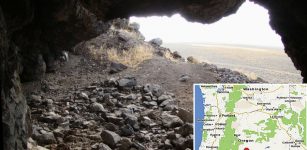 Oldest Preserved Remains Of Bed Bug Found In Paisley Caves, Oregon
Archaeology | Apr 7, 2017
Oldest Preserved Remains Of Bed Bug Found In Paisley Caves, Oregon
Archaeology | Apr 7, 2017 -
 Rare Ancient Roman Cauldron Discovered In Central Norway
Archaeology | Sep 16, 2019
Rare Ancient Roman Cauldron Discovered In Central Norway
Archaeology | Sep 16, 2019 -
 Controversial Tunnel Plan Near Stonehenge Gets U.K. Government Approval – Shocked And Angry Opponents Will Challenge The Decision In High Court
News | Nov 13, 2020
Controversial Tunnel Plan Near Stonehenge Gets U.K. Government Approval – Shocked And Angry Opponents Will Challenge The Decision In High Court
News | Nov 13, 2020 -
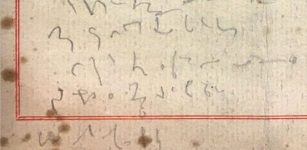 Who Can Solve The Shackleton Scribble Mystery?
Artifacts | Sep 13, 2017
Who Can Solve The Shackleton Scribble Mystery?
Artifacts | Sep 13, 2017 -
 What Caused The Unexplained Change In Europeans’ DNA 4000-5000 Years Ago? Scientists Say The Genetic Turnover Remains A Mystery
Archaeology | Aug 27, 2014
What Caused The Unexplained Change In Europeans’ DNA 4000-5000 Years Ago? Scientists Say The Genetic Turnover Remains A Mystery
Archaeology | Aug 27, 2014 -
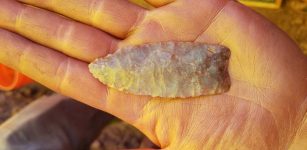 Evidence Americas’ Oldest Mine In Wyoming Was Used By Paleoindians 13,000 Years Ago Has Been Found!
Archaeology | May 19, 2022
Evidence Americas’ Oldest Mine In Wyoming Was Used By Paleoindians 13,000 Years Ago Has Been Found!
Archaeology | May 19, 2022 -
 Evidence Europeans Made Leather Clothing 40,000 Years Ago – New Study
Archaeology | Apr 17, 2023
Evidence Europeans Made Leather Clothing 40,000 Years Ago – New Study
Archaeology | Apr 17, 2023 -
 Ancient Burial Tomb Of A Noble Mongol Warrior With Weapons Unearthed In The Moldavian Village
Archaeology | Aug 9, 2022
Ancient Burial Tomb Of A Noble Mongol Warrior With Weapons Unearthed In The Moldavian Village
Archaeology | Aug 9, 2022 -
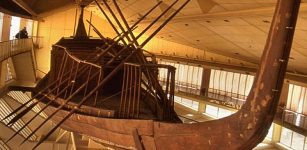 Khufu Boat And Unique Boat-Building Technique Of Ancient Egyptians
Artifacts | Jun 20, 2017
Khufu Boat And Unique Boat-Building Technique Of Ancient Egyptians
Artifacts | Jun 20, 2017 -
 Mystery Of The Lost Continent Destroyed By An Ancient Cataclysm – Mysterious Islands – Part 2
Ancient Mysteries | Aug 16, 2021
Mystery Of The Lost Continent Destroyed By An Ancient Cataclysm – Mysterious Islands – Part 2
Ancient Mysteries | Aug 16, 2021 -
 Askeladden – Little Trickster That Succeeds Where All Others Fail
Featured Stories | Mar 23, 2018
Askeladden – Little Trickster That Succeeds Where All Others Fail
Featured Stories | Mar 23, 2018 -
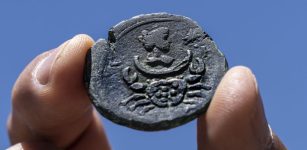 Rare 1,850-Year-Old Bronze Zodiac Coin Discovered During Underwater Survey Off Israel’s Coast
Archaeology | Jul 27, 2022
Rare 1,850-Year-Old Bronze Zodiac Coin Discovered During Underwater Survey Off Israel’s Coast
Archaeology | Jul 27, 2022 -
 Fenrir: Oldest Of Three Monstrous Children Of God Loki In Norse Mythology
Featured Stories | Mar 28, 2018
Fenrir: Oldest Of Three Monstrous Children Of God Loki In Norse Mythology
Featured Stories | Mar 28, 2018 -
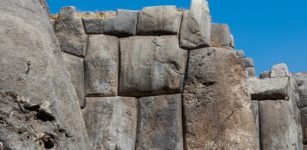 Mysterious Killke Culture Of Peru: Did They Construct Sacsayhuaman?
Civilizations | Mar 14, 2019
Mysterious Killke Culture Of Peru: Did They Construct Sacsayhuaman?
Civilizations | Mar 14, 2019 -
 Challenging Prehistoric Gender Roles – Women Were Hunters Too – Not Just Men
Archaeology | Oct 21, 2023
Challenging Prehistoric Gender Roles – Women Were Hunters Too – Not Just Men
Archaeology | Oct 21, 2023 -
 Famous Bayeux Tapestry May Solve The Planet Nine Mystery
Archaeoastronomy | May 5, 2018
Famous Bayeux Tapestry May Solve The Planet Nine Mystery
Archaeoastronomy | May 5, 2018 -
 Jeanne de Clisson ‘Lioness Of Bretagne’: Her Black Painted Ships With Red Sails Terrorized English Channel
Featured Stories | Oct 4, 2019
Jeanne de Clisson ‘Lioness Of Bretagne’: Her Black Painted Ships With Red Sails Terrorized English Channel
Featured Stories | Oct 4, 2019 -
 Babylonians And Sumerians Had Advanced Knowledge Of Astronomy
Civilizations | Feb 28, 2017
Babylonians And Sumerians Had Advanced Knowledge Of Astronomy
Civilizations | Feb 28, 2017 -
 Magnificent St. Paul’s Catacombs – Largest Underground Roman Cemetery In Malta
Featured Stories | Aug 28, 2019
Magnificent St. Paul’s Catacombs – Largest Underground Roman Cemetery In Malta
Featured Stories | Aug 28, 2019 -
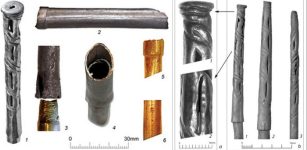 Oldest Surviving Drinking Straws Identified – ‘Sceptres’ From The Maikop Kurgan
Archaeology | Jan 19, 2022
Oldest Surviving Drinking Straws Identified – ‘Sceptres’ From The Maikop Kurgan
Archaeology | Jan 19, 2022

